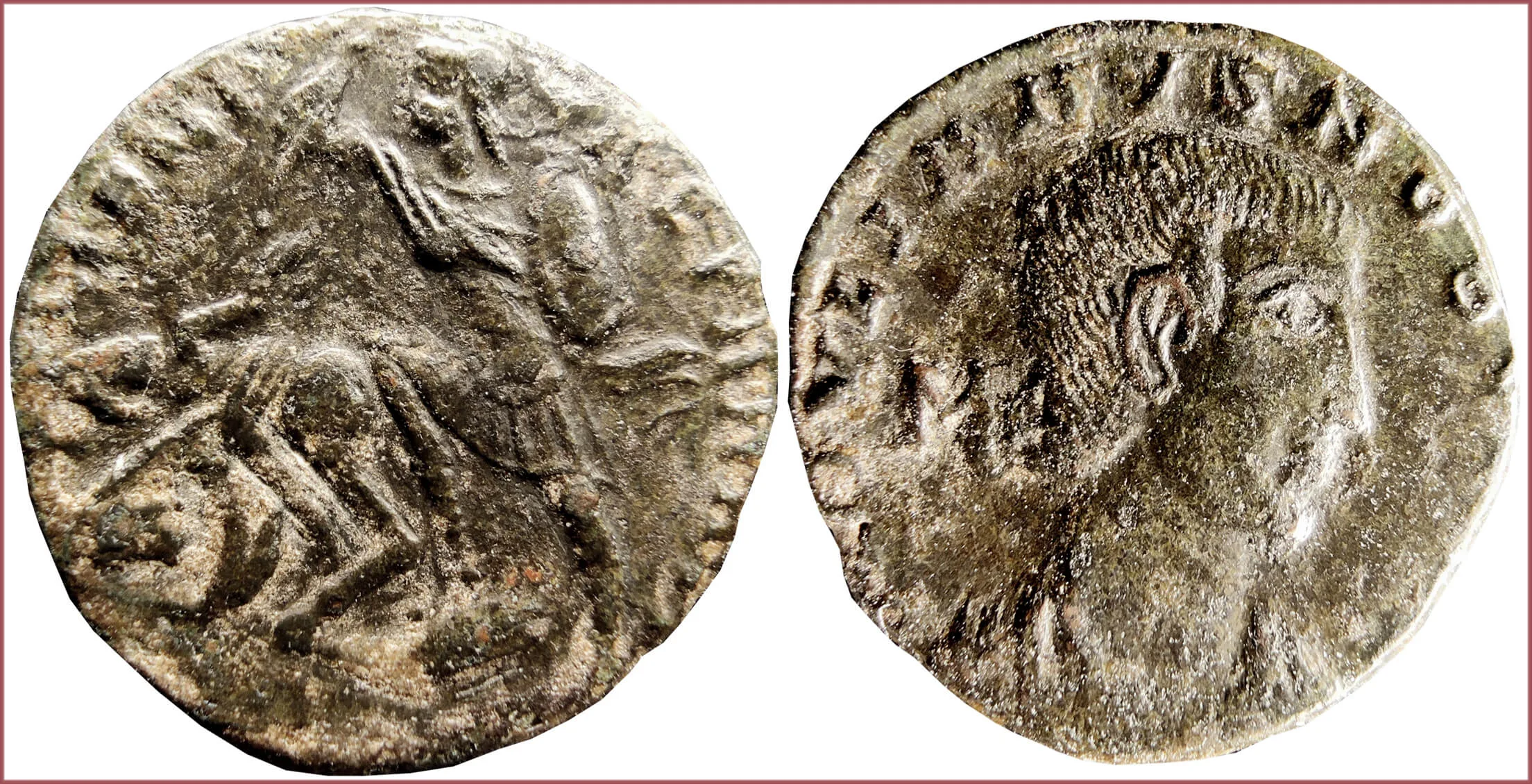CENTENIONALIS: COIN OF ROMAN EMPIRE
Centenionalis, 361-363: Later Roman Empire
ND (no date).
Ruler: Julian II (Flavius Claudius Julianus) — Roman emperor from 361 to 363, as well as a notable philosopher. His rejection of Christianity, and his promotion of Neoplatonic Hellenism, caused him to be remembered as Julian the Apostate in Christian tradition.
FEL TEMP REPARATIO: Latin "Felicitas Temporum Reparatio" — "Restoration of happy times".
Roman warrior spearing fallen horseman (barbarian).
D N IVLIANVS NOB CAES: Latin "D(ominus) N(oster) Julianus Nob(ilis) Caes(ar)" — Our Lord Julian, the noble Caesar.
Portrait of the Roman emperor Flavius Claudius Julianus.
M: sign of unknown origin on the left.
Mint of Aquileia (modern Italy).
- Bronze: 17 mm - 2.7 g
- Reference price: 17$
COIN CENTENIONALIS — WHERE & WHEN (coins catalog: by names & emitents)
- ROMAN EMPIRE (350-400): centenionalis
CENTENIONALIS as coin name.
Honestly, centenionalis is one of the most ambiguous coins for me.
On the one hand, this term in numismatic literature is quite confidently called a number of bronze coins of the Later Roman Empire (the second half of the 4th century AD). However, on the other hand, when identifying such coins, there is often a situation where completely different persistent assumptions come from different specialists.
For example, the above coin on different sites is called in different ways: centenionalis, maiorina, follis, or simply referred to a conditional type AE coins.
For myself, I decided to consider the following assumption to be accurate. — By the middle of the 4th century, the role of a small exchange coin in the Roman Empire was played by follis. However, over time, this coin has rapidly depreciated. There was a need to introduce a new coin that would regain the confidence of the population.
About 350, two new bronze/copper coins appear in circulation instead of follis. The smaller one (usually up to 3 grams) is called centenionalis by modern numismatists, while the larger one (about 5 grams) is called maiorina. By the way, as regards the above-mentioned AE coins, it is generally accepted that such a term refers to those ancient Roman (and also ancient Greek) bronze/copper coins, the denomination of which cannot be precisely identified.
It is interesting that in the catalogs there are coins with denominations centenionalis and maiorina only from the period between 350 and 400. But some of them are sometimes called follis or AE coins...











